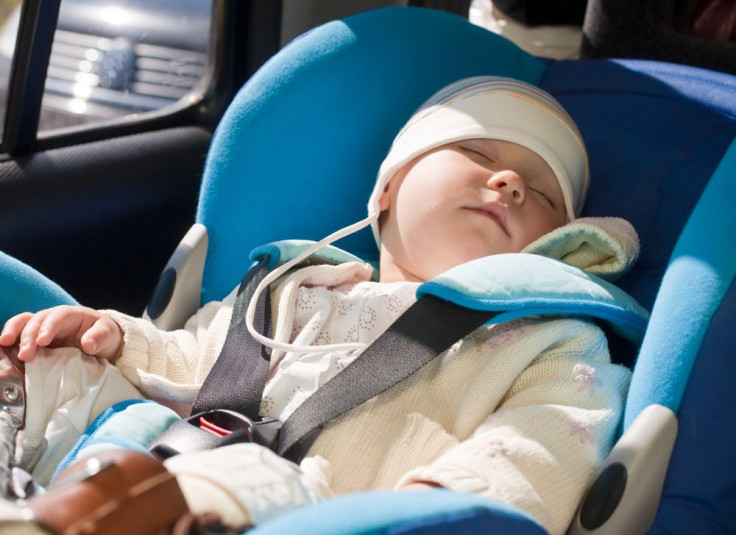Car Seats Are No Place For Naptime: Study Finds Cribs Are Still Ideal For Sleeping Infants

Out of all the fears apprehensive parents face, there’s nothing that causes mothers and fathers to lose sleep more than Sudden Infant Death Syndrome (SIDS). The thought of their child being here one minute and gone the next is almost too much for parents. Researchers from the U.S. Consumer Product Safety Commission and Children's National Medical Center have called attention to the hazards of improperly using infant sitting and carrying devices.
While rates of SIDS have declined in recent years, rates of death caused by suffocation, entrapment, and asphyxia have actually increased and remain the most common death for infants 1 to 12 months. Researchers say parents use sitting or carrying devices, such as car seats or bouncers, as alternative sleeping devices all too often. Many parents may not understand the risk for injury and death this creates.
"Many parents use sitting or carrying devices, not realizing that there are hazards when they do this,” Dr. Erich K. Batra, from the Penn State Milton S. Hershey Medical Center, said in a statement. "Infants and young children should not be left unsupervised when using a sitting or carrying device due to the risk of suffocation and death.”
Batra and his colleagues assessed 47 deaths linked to infant sitting and carrying devices that were reported to the U.S. Consumer Product Safety Commission. Deaths that occurred between April 2004 and December 2008 included newborns and toddlers under the age of 2. The amount of time between when the infant was last seen alive and when they were discovered ranged from four minutes up to 11 hours.
Two-thirds of all deaths were linked to car seats, including 52 percent of car seat deaths that were tied to strangulation with straps. Other sitting and carrying devices associated with infant deaths included slings, swings, bouncers, and strollers. Out of all 47 deaths linked to sitting and carrying devices, 46 were caused by asphyxia. The design of infant sitting and carrying devices and their restraints are not meant for unsupervised sleeping.
According to the American Academy of Pediatrics, parents should keep toddlers in rear-facing car sets until the age of 2 or until they reach the seat’s maximum height and weight recommendations. Deaths linked to motor vehicle crashes among children under the age of 16 declined significantly over the past two decades. However, it still remains the leading cause of death for children ages 4 and older.
Batra’s research offered up a list of recommendations for parents using sitting or carrying devices:
1. Do not leave children unsupervised (awake or asleep)
2. Never leave children in a car seat with unbuckled or partially buckled straps
3. Car seats should never be placed on a soft or unstable surface
4. Infants in bouncers, strollers, and swings may be able to maneuver into positions that could compromise their airway; straps on these devices may not prevent infants from getting into hazardous situations
5. Ensure that infants cannot twist their heads into soft bedding or slump forward in a seat; restraints should be used according to manufacturer's instructions
6. Slings are particularly hazardous because of their design and the ease with which an infant's airway can be collapsed. If used, the infant's face should be "visible and kissable" at all times
7. Do not place more than one infant together in a swing meant for one infant
Source: Batra E, et al. Cribs Are for Sleeping, Car Seats Are for Traveling: Danger in Using Sitting and Carrying Devices for Sleeping Infants. The Journal of Pediatrics. 2015.



























